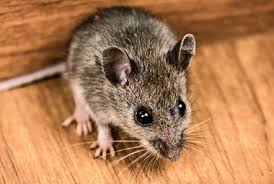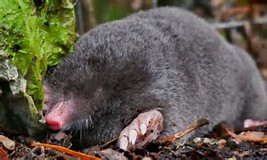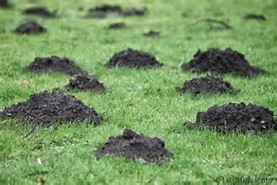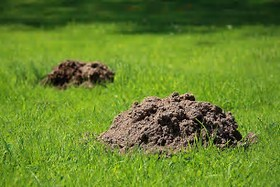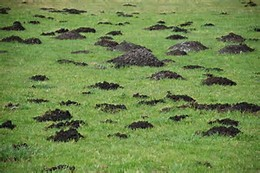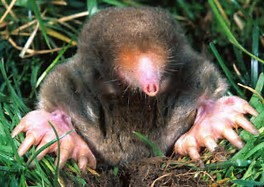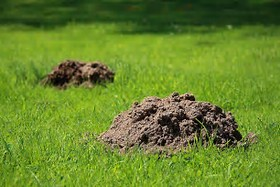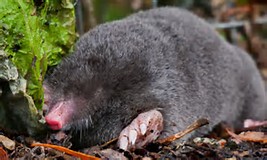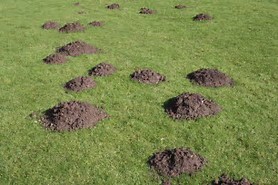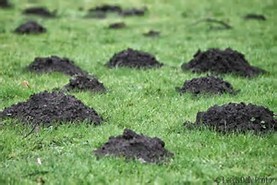Moles - FAQ
How to identify moles
It is estimated that there are between 35 - 40 million moles in the UK. As they spend almost their entire life underground moles are very rarely seen. Moles are a mammal and belong to the mammal family Talpidal. The mole that resides in the UK is the Tulpa Europaea, more commonly known as the European or Common Mole.
Moles have a cylindrical body, strong shoulders and broad, spade-like limbs with claws for digging. It has a pink, hairless snout that is extremely sensitive. They measure around 14cms in length with a 2.8cm tail. Fur is soft, thick and silver-black in colour. Moles have very poor eyesight and no external ears, however, they have excellent senses of touch and smell.
The mole is the only mammal to live solely underground and is able to achieve this because they have a greater number of red blood cells than other mammals. This enables them to live in an environment where oxygen levels are low. A male mole is called a boar and a female mole is called a sow. A group of moles is called a labour.
Signs of a mole problem
Moles are very rarely seen as they spend almost their entire lives underground. The most obvious sign of a mole problem is the presence of mole hills. Moles are industrious workers and phenomenal diggers. They can shift up to 540 times their own body weight of earth per day, tunnelling up to 200 metres in 24 hours, digging new tunnels and throwing up more mole hills in their search for food.
Why do I have a mole problem?
Gardens and pastureland are ideal habitats for moles. They prefer well irrigated soil that contains a good food supply. Moles typically live in seclusion and are very territorial except during the breeding season.
How serious is a mole problem?
One mole can cause a lot of damage. In a domestic situation the mole is classed as a pest which causes costly aesthetic damage mainly to lawns and flowerbed. In the agricultural industry the problem can be a lot more serious. Listeriosis is a bacterial disease which can infect sheep, cattle and many other animals. The bacteria is present in soil which is brought to the surface as hills by the moles. When the grass is cut for hay and sileage, any soil from the mole hill is picked up and mixed with the grass. In the right conditions, this bacteria will multiply and many livestock die each year from this disease.
Can I control moles myself?
Mole control can be very difficult to the untrained individual and it is advisable that a professional control company is contacted. Here at Bradford Pest Control our technicians are fully trained, knowledgeable and have access to the best tools and professional use products to ensure that our service is carried out safely.
Our mole control treatment
- Upon making contact with our professional pest control team, an appointment will be made at your convenience to visit your home or business premises.
- Our professional pest control technician will examine your property and identify the problem.
- On completion of the inspection and an assessment of the situation, the technician will recommend the best cause of action to control the mole problem.
- Our technician will use the best tools and professional use products to ensure that our service is carried out safely.
Do I need to do anything before mole control takes place?
No, you don't need to do anything at all. Our technician will ensure that our service is carried out safely ensuring peace of mind for you and your family or business.
